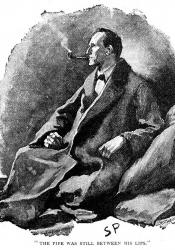The Adventures of Sherlock Holmes Published
The Adventures of Sherlock Holmes is one of literature's most famous recurring characters and a staple in the mystery genre. Arthur Conan Doyle has crafted a series that has stood the test of time and cemented its place amongst literary canon. The Adventures of Sherlock Holmes was published on October 14th, 1892, by The Gresham Press and George Newnes as a collection of short stories containing over 100 images. In essence, Doyle’s work has been responsible for creating much of the conventions that are a staple of the mystery genre. Between 1887 and 1927, Doyle wrote four novels and fifty-six stories with Sherlock Holmes. All the short stories appeared first in The Strand magazine before eventually being published as book editions. Without question Sherlock Holmes is a classic literary figure, and his iconic look has played a large role in his historical staying power. Sidney Paget, the illustrator responsible for the work in The Adventures of Sherlock Holmes, played an essential role in the creation of the Sherlock Holmes that we know today. Paget used a photomechanical half-tone method of illustration that is directly responsible for the sketch style that defined the series’ illustration. What’s significant about Paget’s illustration is that he created these drawings entirely based on Doyle's references to Holmes’ dress. This is important because it speaks to the notion of the artist and author as separate bodies, each interpreting the text in their own individual way.
Source: victorianweb.org
Submitted by: Simon Mancuso, Alexandra Monstur and Marina Arnone

